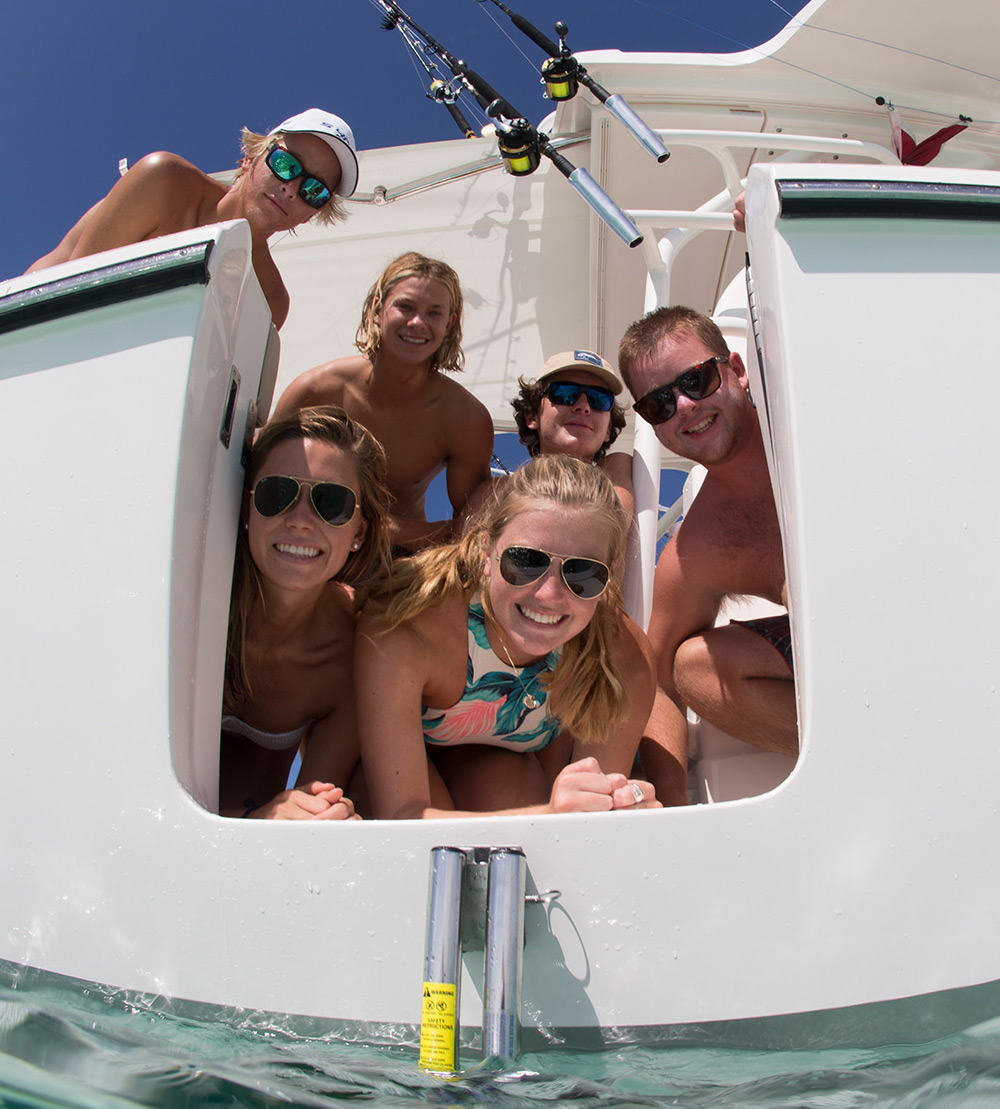How to Christen your Boat

You’ve built your dream boat. You’ve chosen the colors, the finishes and the accessories. You’ve patiently awaited its delivery. You spent hours coming up with a name, and then you followed our step by step guide on how to notify Poseidon, god of the sea, of your boat’s name. There’s only one step left: It’s time to christen your boat!
The History of Boat Christening
Christening is a centuries-old tradition that is said to bring good luck and safety to a vessel. According to some sources, it’s a ritual that dates back to ancient Greek and Phoenician civilizations who believed that a proper christening ceremony is necessary to obtain the favor of the gods of the seas and ensure that they grant safe passage to your boat.
The ancient Greeks believed that christening was necessary to obtain the favor of Poseidon, their god of the sea. The ancient Romans, meanwhile, believed that Neptune was instead the ruler of the sea. Both gods were said to live in a grand palace on the seafloor, watching over the comings and goings of every vessel across the seven seas, granting them safe passage or destruction as they saw fit.
Boats that had not been properly christened, were believed to be at high risk of suffering any of a number of disasters, including long periods of bad weather at sea, fires, injuries to seafarers, collisions with other vessels and even sinking.
So in general, the tradition of boat christening has developed as a way for sailors to ensure the protection of their vessels while at sea.
The Evolution of the Christening Ceremony
Honestly, the earliest accounts of vessel christenings were pretty morbid and we're glad they’re no longer a thing.
For example, one ancient Babylonian script said to date from the third millennium BC, reveals a ceremony that involved the sacrifice of oxen to obtain the gods' favor over the vessel. Gross! (Also: the poor oxen!)
Thankfully, the use of sacrificial blood within the christening ceremony has evolved (read: gone away) with the times and according to Wikipedia, we’ve mostly got the Reformation period to thank for that. Consequently, by the 17th century, the more religious aspects of christening ceremonies had been done away with and the whole thing had become a lot more civilized. For example, the 1610 launch ceremony for the English naval ship Prince Royal involved a splash of wine courtesy of the Prince of Wales, accompanied by the sounding of trumpets.
Today, vessel christenings typically involve someone breaking a bottle of champagne over the ship’s bow.
The concept of breaking a bottle of champagne over the bow is itself quite an old tradition already and apparently dates all the way back to 1890 when the USS Maine was launched.
A year later, Queen Victoria solidified the champagne-bottle-breaking tradition when she christened the HMS Royal Arthur with a bottle of champagne. Most sources agree that this specific act forever associated the use of champagne with ‘power and elegance’ - two sentiments that almost every boater will associate with their own boats. Other liquids including brandy and holy water have been used from time to time, but champagne is the one that really stood the test of time. It remains the bottle of choice today.
How to Christen your Boat - the Modern Way!

Christening ceremonies differ depending on the vessel involved. Warship launches, for example, are often accompanied by elaborate state ceremonies attended by all kinds of dignitaries and other special guests. There are long speeches full of memorable words, and these are often accompanied by military parades, performances and military bands. There’s no limit, and it can last several hours.
For recreational boats like the one most of you reading this will own, the ceremony is typically much less elaborate and shorter but - in our opinion - way more fun!
-
Step 1: Get all of your favorite people together
Apart from the excitement of buying a new boat, the best part of this whole process is just having a really fun occasion with the people who mean the most to you.
Get your closest family members and friends over to the marina and make sure someone is ready to take a few photos and a short video clip! You may, however, want to ensure that you choose the right day of the week though and here, we once again look to mythology and tradition:
Fridays - all Fridays - are considered bad luck. Apparently, even the US Coast Guard doesn’t arrange boat launches for Fridays, for the same reason. Norse mythology dictates that all Thursdays are also bad choices because they risk invoking the wrath of Thor - the god of storms and thunder. According to various religious traditions, the first Monday in April, the second Monday in August and December 31st are all bad choices as well.
-
Step 2: Prepare the champagne & a leafy branch
The most important thing you’ll need next is a bottle of champagne and a leafy branch. But not just any bottle of champagne. Please opt for one of the specially-made ceremonial bottles that are easily available from various sources. These bottles are pre-scored for easy breaking and are packaged in a fine mesh bag. That ensures that when the bottle is broken during the ceremony, all of the broken glass remains contained within the bag and doesn’t pose any environmental or safety risk.
Feel free to also bring along a real bottle of champagne with some plastic drinking glasses to celebrate afterwards. Plastic glasses are so important because it’s almost a given that someone is going to drop or break one, and broken glass on the dock is a quick way to ruin a fun event.
You’ll also need a leafy branch, which is part of the christening ceremony. More on that, soon.
-
Step 3: Give a speech!
It’s time for the captain to give a speech. This can range from a few words to more theatrical, traditional speeches. It’s really down to the personality of the captain giving it!
Be sure to welcome and thank your guests for being there. Give them a brief explanation of the name of the boat and, if you like, you can even say a little poem.
If you brought that bottle of real champagne with, you can feel free to have a little toast to the boat at this point.
-
Step 4: Lay the branch on the deck
The branch symbolizes land and the boat’s safe return to land after every journey. It’s basically a good luck symbol. Any branch is fine. At least this time around there are no specific restrictions!
The branch should be laid on the deck and should remain there throughout the ceremony up until the boat returns from its maiden journey. After that, it can be discarded.
-
Step 5: Break the bottle on the bow!
The fun part! It’s time to break that specially-purchased ceremonial bottle across the bow.
We recommend that you don’t impact any GRP or gelcoat with the bottle because there’s a risk that you’ll damage the paintwork. Rather break it over an anchor roller, cleat or somewhere similar.
If you weren’t able or preferred not to buy a ceremonial bottle, as an alternative you can also pour a little bit of champagne over the bow of the boat.
-
Step 6: Take the boat on her maiden voyage
The christening ceremony is done and it’s time for the maiden voyage! This is an official part of the ceremonial proceedings so be sure that you don’t skip this step. If for some reason you can’t take a proper voyage, even just drifting into the marina or to a mooring qualifies. As long as the boat travels over the water’s surface, you’re good!
Your new boat is now christened and ready for a lifetime of fun and memories! If you enjoyed this guide on how to christen your boat, please be sure to stay tuned for future posts for more great content written by boaters, for boaters!

